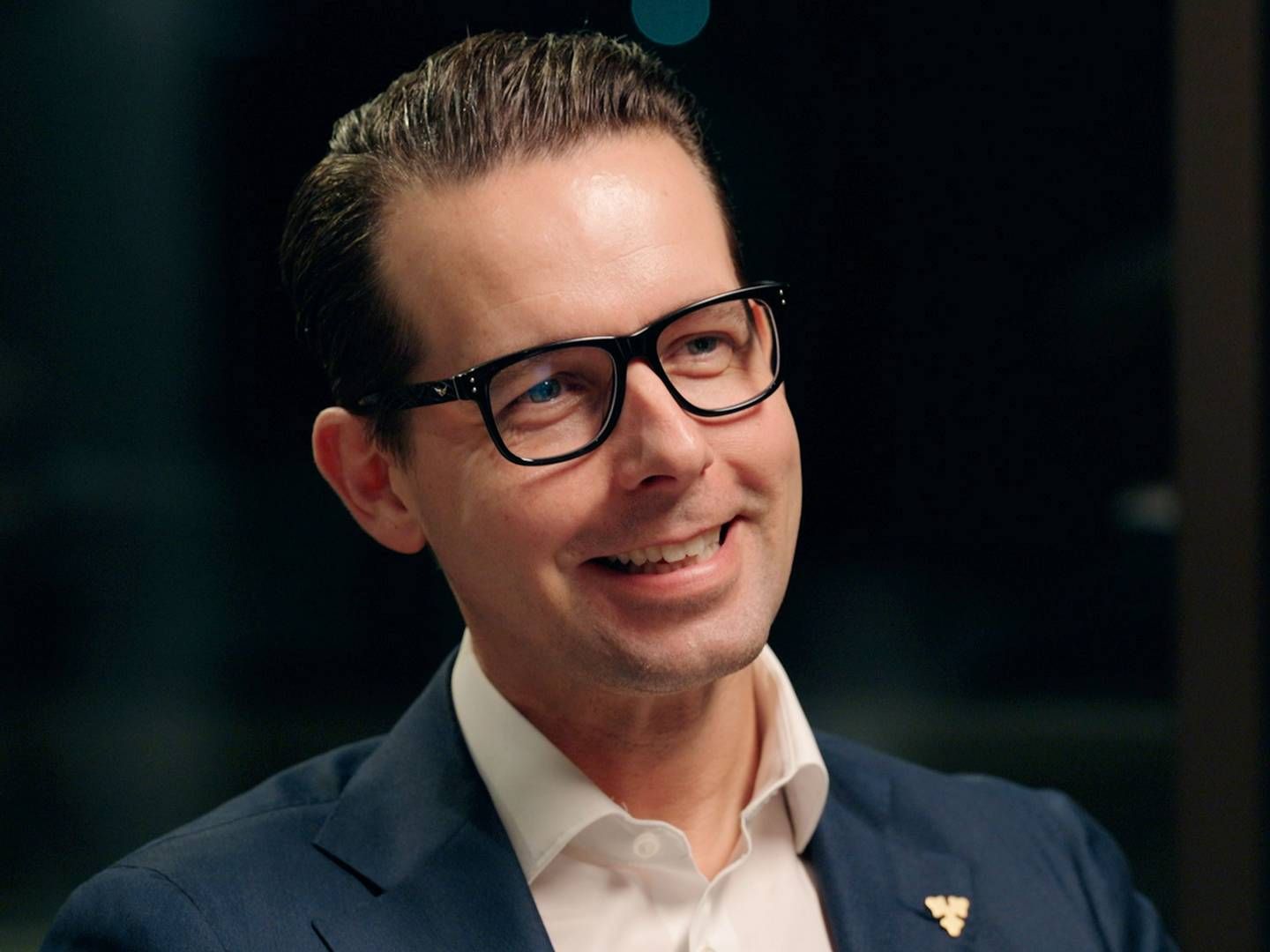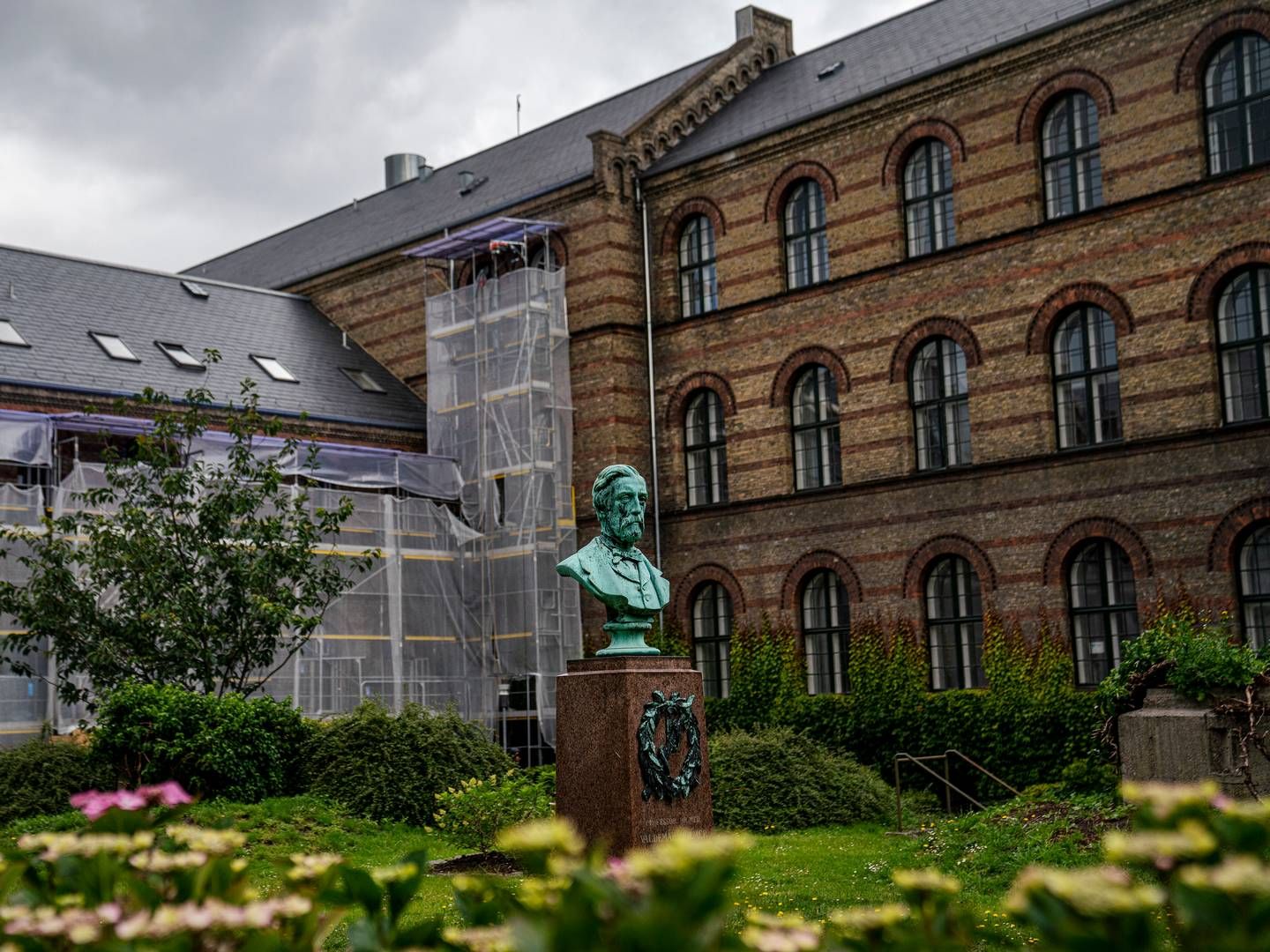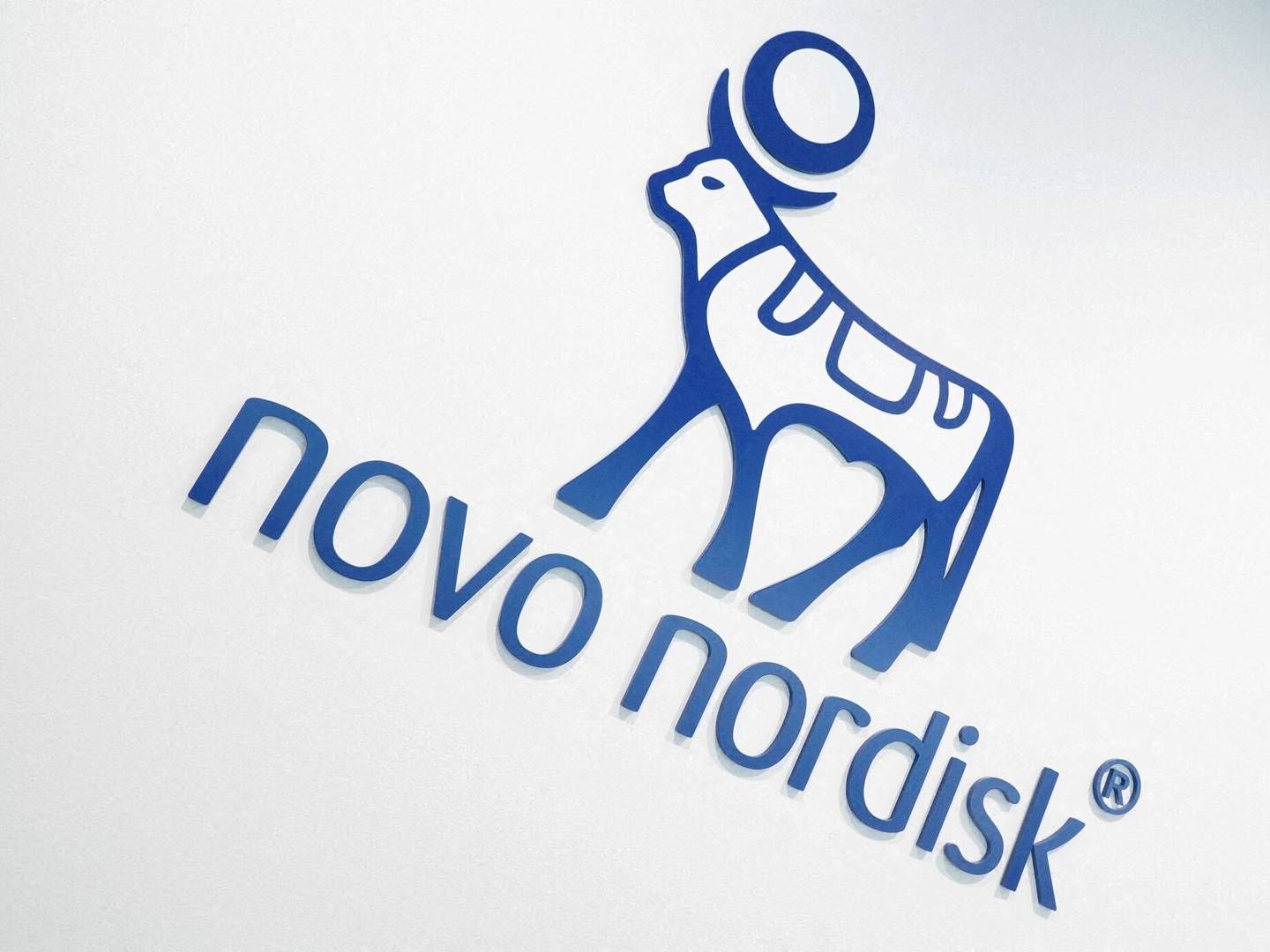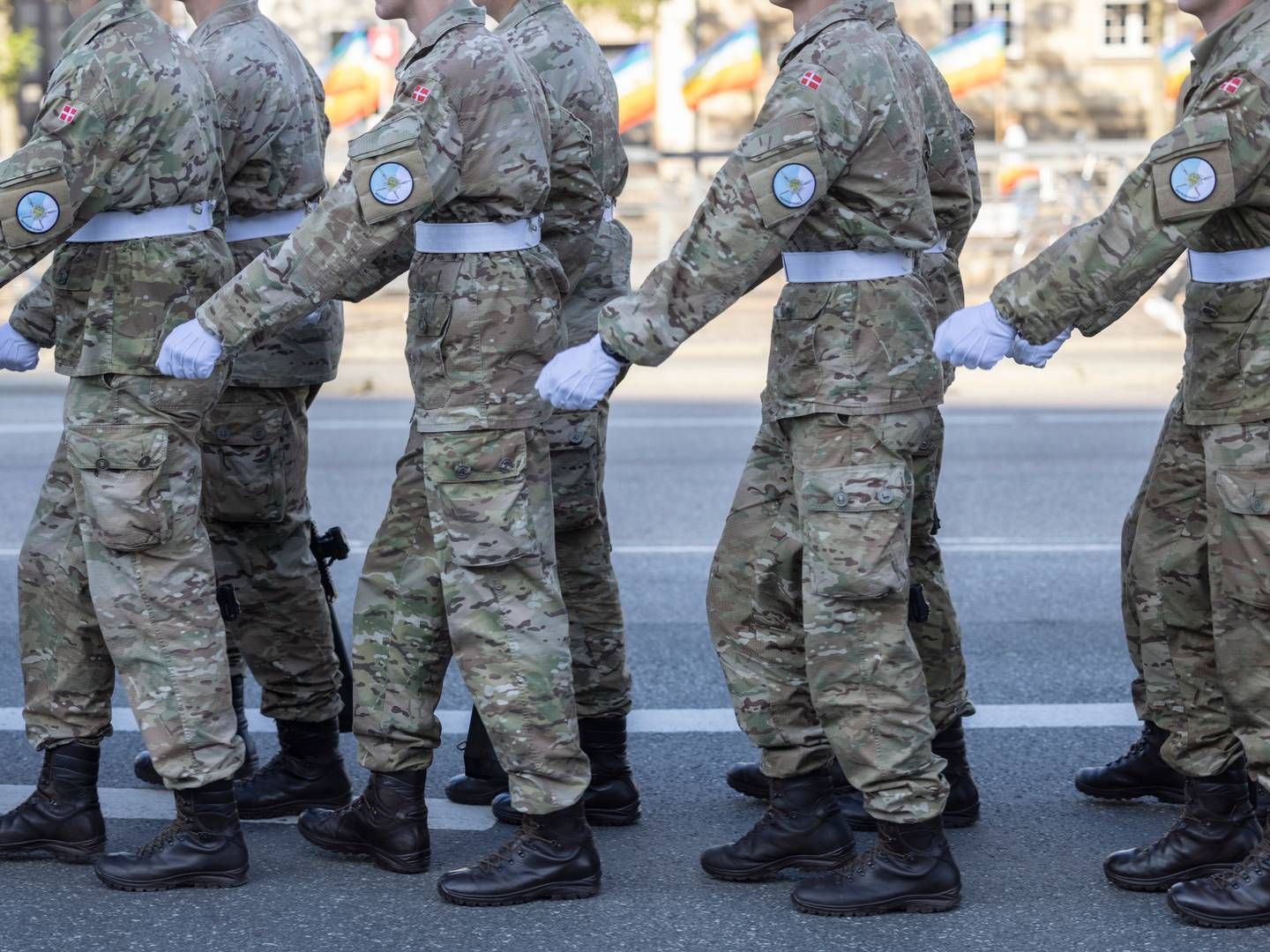All.Department e-mails - an organizational information transmission system or a forum for dialogue?
Titles such as 'Community in Cyberspace' (Smith & Kollock 1999), 'CyberSociety'
(Jones 1995) and 'Soziales im Netz' [Social relations in the Net] (Thimm
2000) indicate that focus in research recently has moved from the technical
aspects of computer mediated communication (CMC) to more interdisciplinary
issues such as: How can the mutual relationship between new communication
technologies and the ongoing development of new communication forms and
patterns be studied? And how are new communication technologies used in
specific social contexts and for specific social purposes?
E-mail communication via an Intranet is nowadays a very important part
of organizational communication, even though it does not necessarily supersede
or even substitute more 'traditional' forms of communication such as face-to-face
communication, phone calls and different forms of written communication
(Kleinberger & Thimm 2000: 262f). Some scholars (for example Ziv 1996,
Mulholland 1999 and Kleinberger & Thimm 2000) have conducted empirical
studies of the use and the social impact of electronic mail in organizations
(cf. the overview in Garton & Wellman 1995 and the comments made by
Holmes 1995). However, there are still surprisingly few contributions
to the study of e-mail communication in the organizational field.
In this paper we want to present the first results of an explorative case
study of internal e-mail communication at a Danish university department.
This predominantly qualitative study is part of a more comprehensive research
project investigating on the one hand characteristics of Intranet communication
in an organization and on the other hand relational aspects of this communication
as a contribution to develop or maintain an organizational identity.
The case study focuses on how organizational members of the department
use the communicative potential of their all.department e-mails. We focus
primarily on research issues such as: How do the all.department e-mails
function as fast information processing and effective coordination of
work tasks? How and to which extent are these e-mails used to build up
and develop social relations within the department? And finally, would
it be reasonable to interpret some of the all-department e-mails as active
contributions to construct an organizational community and corporate identity?
These research issues are point of departure for the empirical investigation
of a text corpus of all.department and all.university e-mails sent to
the members of the department. In chapter 2 we offer a sketch of the project's
theoretical framework. In chapter 3 we describe the organizational context
in which the text corpus is embedded. The empirical analysis in chapter
4 is divided into the three following sections. In chapter 4.1 we characterize
the participants, the topics, the text styles and genres in the departmental
e-mail communication in greater detail. In chapter 4.2., the social relations
are analyzed as well as the communities established through and referred
to in the all.department e-mails. Hereby the characteristics of the more
typical e-mails within our text corpus emerge. However, since our social
constructionist approach emphasizes the active role of the participants
in e-mail communication, also 'non-standard' e-mails in the text corpus
will be analyzed to such an extent that they throw light on how some organizational
actors make another use of the all.department e-mail system (chapter 4.3.).
In chapter 5 our empirical findings will be related to different concepts
of communication and management.
2. Virtual communities and organizational identities
Before we start analyzing the text corpus, we must touch upon the crucial
theoretical relationships between organization and communication. The
so-called 'containment' relationship "treats communication as located
within a reified, materialistic organizational structure" (Putnam,
Phillips, Chapman 1996: 375) that determines the type and flow of communication.
Our approach may rather be characterized by a 'production' relationship
focusing on the ways "organizations produce communication, or communication
produces organization, or the two co-produce each other" (ibid.).
We emphasize the important role of 'agents' or 'interlocutors' for constructing
organizations (public institutions, companies, interest groups, administrative
units) and organizational identities in their daily interaction and communication.
Organizations shape communication processes and other interaction processes,
and simultaneously they are constituted by them. In our study this general
assumption that communicating and organizing are interdependent processes
is applied to Computer Mediated Communication, where the actual technology
on the one hand enables certain forms of communication, and on the other
hand constrains the potential actions of the organizational 'agents':
In structuration theory, and consistent with the more general constructionist
perspective, more emphasis is placed on humans (as agents) being both
enabled and constrained by technical structures, yet these very same structures
are the result of previous actions (…) (Shulman 1996: 365)
The social reality of the organization as a symbolic and virtual community
is constructed in the electronic networks:
(…) reality is not constituted by the networks CMC users use; it
is constituted in the networks. It would be far easier to understand the
physical, or hardwired, connections than to understand the symbolic connections
that emerge from interaction (…) Much of our energy has been directed
toward understanding the speed and volume with which computers can be
used as communication tools. Conspiciously absent is an understanding
of how computers are used as tools for connection and community (Jones
1995: 12).
E-mail communication within an organization's Intranet thus enables members
of the organization to build up social relations within a dynamic, organizational
context in order to create a virtual community. Members of the organization
might also use this internal e-mail communication to articulate some identification
with the group of colleagues as well as with the organization. Keywords
for these community building functions, cf. Bayum 1995 and Wellman &
Gulia 1999, are attachment to the organization as a virtual community,
(weak and strong) social relations and community ties, emotional support,
companionship, norms of reciprocity and solidarity, and sense of belonging
and identity.
Different members' perceptions of what unites the group of colleagues
at the workplace and what differentiates the organization from other similar
organizations might be expressed in their e-mail communication to the
colleagues. However, an organizational identity is no stable and well
defined entity. On the contrary it must be viewed as a product of ongoing
construction and negotiation of meaning .
Of course identity is not durable in any absolute sense. It changes while
maintaining a dynamic consistency. The more relevant issue is (again)
one of balancing change and stability while maintaining some connection
with past conceptions of who we are (Gioia 1998: 24).
The identity of an university department or any other organization can
not only be traced in consciously produced visual symbols such as the
buildings, the logo or the offices, nor in deliberately constructed verbal
symbols such as the name of the organization, its visions, strategy papers
and mission statements. More indirectly the identity might be expressed
in the social interactions taking place within the organization. The management
of an organization might try to implement a certain organizational identity,
and thus make attempts to guide the members of the organization in a certain
direction, offering them a certain understanding of the organization's
core activities and their roles and tasks within this organization as
a community (cf. Dutton & Dukerich 1991).
In the following we will use the concept 'organizational identity' and
define it as a "socially and symbolically constructed notion intended
to lean meaning to experience" (Gioia 1998:27). In the analysis of
our text corpus we will ask the question if and how the management of
the department use the semi-public all.department e-mails to construct
an organizational identity, and if and how single members of the department
take part in such construction processes. Furthermore we will investigate
if and how this identity work might be linked to more emotional statements
about commitment and organizational membership (Thimm 2000: 12).
3. Empirical material and organizational context
In the following chapters we are going to analyze the internal mails that
were sent via Netscape-mail to all employees of a department at a Danish
university within three months (December 1999 to February 2000). All members
of the departmental staff can uninvited send such mails directly to all
the other staff members; they automatically receive these all.department
e-mails. In contrast to academic and other distribution lists, newsgroups,
bulletin boards or discussions lists you need not to register in order
to be enrolled (cf. Crijns 1999 and Thimm & Ehmer 2000).
The tasks of the studied university department are within research and
teaching; in the period studied the academic staff comprised 44, from
professors to Ph.D. students, and the administrative staff 13. These 57
employees form the group of potential writers and recipients of the all.department
e-mails. Many members of the academic staff have access to their e-mail
from their home address via a modem and are thus often part of a virtual
rather than a locally based communication network.
The core text corpus consists of 94 all department e-mails. Additionally,
136 all.university e-mails from the same period have been collected for
comparative purposes. The university department has introduced English
as its 'corporate language' for all sorts of internal communication. Therefore
the majority of the all.department e-mails are written in English; some,
however, are in Danish, and a few are sent both in Danish and in English.
4. Analysis of all.department e-mails
The following description and analysis of the text corpus aims at clarifying
how the all.department e-mails contribute to coordinating work processes
and to building up social relations within the university department and
construct certain communities.
4.1. Participants, topics, styles and genres
In order to characterize the all-department e-mails in greater detail
we will answer the following questions: Who are the writers, and whose
voices are heard? Which issues and topics are predominant? What are the
characteristic features of the communication style? Which are the prevailing
text types? To which extent is intertextuality salient within the text
corpus? And eventually, are the all.department e-mails primarily monological,
or do they invite to a dialogue?
1) Participants
34 mails are written by 10 of the 44 researchers and teachers; the Head
of Department has sent 15 of the 34 mails; the administrative staff have
written 60 mails; with one exception all the secretaries have written
one or more mails during the 3 months. The majority of writers hold a
specific position: as Head of Department, secretary for the study program
director, chair of a committee, organizer of a research seminar, coordinator
of a course etc.
2) Topics
The all-department e-mails contain information about decisions made by
the Head of Department, the board of the department and the study board.
The administrative staff informs about administrative processes: directives,
procedures for purchase of books and office accessories, travel accounts,
guidelines for the individual annual report on research and teaching etc.
Those e-mails refer to the organizational actors as members of and suppliers
to the administrative unit 'department' and 'university'.
Information is given about academic events such as Ph.D. defenses, visiting
lectures, and departmental research seminars, often with an invitation
or a paper attached. Those e-mails are sent to all employees at the department,
but are primarily addressed to the academic staff, i.e. the members of
the department and the university as research units.
A weekly departmental newsletter is sent electronically as an attachment
to an all.department e-mail. Its main function is to inform all organizational
actors within the department as a workplace about issues that might be
of relevance for their administrative tasks, their teaching and their
research. It consists of a calendar of departmental events. It informs
about internal seminars, meetings, receptions for new employees and employees
leaving the department. It also informs about new publications written
by the academic staff. Moreover it contains short notices on and references
to a lot of information and documents received by the department and filed
by the secretary responsible for the newsletter. The newsletter thus gives
all organizational actors a quick overview of all received documents that
they afterwards can get access to. In our text corpus there are also isolated
e-mails referring to the department as a working community, such as invitations
to the department's Christmas party, with congratulations, announcement
of welcome and farewell receptions. The writers of these mails are primarily
secretaries communicating on behalf of the Head of Department.
Finally, there is a remarkable frequency of all.department and all-university
e-mails commenting on the technical aspects of the department's or the
university's communication systems, i.e. the phone and voice mail system,
the mail server, the Intranet and Internet, the e-mail communication.
Most of these e-mails are sent when delays, obstructions, or breakdowns
occur. This kind of metacommunication serves the function to administer
and take care of the communication systems that gradually have become
backbone of the coordination of the daily working life at the department.
3) Styles
In the studied e-mails the dominant style is factual and often also rather
formal. Most e-mails inform very briefly about a single issue, often in
a kind of memo (cf. Mulholland 1999):
To Department's Academic Staff
Please fill in the enclosed form stating all of your research publications
in 1999. If you have any problems reading the file, please feel free to
contact me.
Regards Karen.
Jette Petersen has last week born a baby named Elisa. The baby weighs
3650 grams. Jette has been sent a bouquet of flowers from the department.
Regards Karen. (original in Danish)
A few e-mails contains more emotional expressions and functions as reprimands
or moral qualms:
Subject: Who has taken the department's copy cards??!!
Since we have only got 4 provisional copy cards for the whole department
it is very disloyal behavior not to return a copy card after use. The
two persons who yesterday borrowed the department's copy cards are kindly
requested to return them to me immediately!!!
Anne (original in Danish)
Subject: Disaster at the department
Just to say that Peter is completely right. The kitchen has been a disgusting
sight recently. I came in between Christmas and New Year's and some party
had just left everything to rot over the holidays.
Regards, John
4) Genres
Most of the all.department e-mails obviously function as a mixture of
texts at a bulletin board and memos. Therefore it is not at all surprising
that the informative text types are salient: messages, announcements,
warnings, reminders, minutes from meetings. However, there are also quite
many texts encouraging taking actions. Such texts include inquiries, invitations
or advertisements of loss (keys, parcels, accounts). Texts stating one's
opinion on values or visions about the department's strategic role or
about the department's identity compared to other departments at the university
are not found in the corpus. There are neither articulations nor discussions
of such issues, only a single commentary written by the Head of Department
concerning the need to find external research support because of scarce
internal resources.
5) Intertextuality and interactivity
In contrast to e-mail communication between two persons, the all.department
e-mails in this text corpus do not have any dialogical qualities (cf.
Eklundh 1994). There is only one example of an all.department e-mail where
the Head of Department replies to all employees, and a single e-mail where
a reprimand given by a secretary is supported by a researcher at the department.
But there are no longer question-answer exchanges (cf. Crijns 1999b),
and there is no feedback in the semi-public sphere.
Furthermore the all.department e-mails are characterized by very few
intertextual and interdiscursive (cf. Handler 2000) features. Quotes of
other all.department mails as point of departure for comments have not
been found in the corpus; but there are some mails with links to other
web-sites.
This preliminary investigation of the all-department e-mails shows the
following tendencies: The all.department e-mails are primarily used as
fast information processing and transmission from holders of specific
positions at the department to all other members of the organization.
The dominant e-mail text type is informative, that is messages that serve
the function to run and manage the department as an administrative unit,
a teaching unit and a research unit. A more thorough analysis focusing
on the social relations will show if and how this emphasis on information
has certain consequences for the department as a community and social
network. In the next section, however, we also look for all.department
e-mails that might serve other purposes.
4.2. Social relations and identification processes
In this section we focus on the salutations and greetings used in the
all.department e-mails (1) as well as references made to the department
as a community (2). The overall research issues are if and how the all.department
e-mails are used to build up and sustain social relations, and if and
how this kind of e-mail communication is used to articulate identifications
with the department. We thus search for traces of a sense of belonging
and an emotional attachment to a community that furthers commitment and
solidarity.
1) Salutations and greetings
The Head of Department and most of the other academic staff members consistently
salute the staff with 'Dear colleagues' and often greet with 'Yours' or
'Best regards' and their first name. Most secretaries in the department
have chosen a more distant form (e.g. 'To the academic staff at the department')
and they often greet with 'regards'. Some secretaries shift between the
more intimate 'Dear all' and 'have a nice weekend' or 'Best wishes', and
the more informal 'Hi everyone' and the more neutral 'regards' or even
no salutations and greetings. The secretaries normally sign with their
first name. Many mails also contain an electronic card with name, academic
title, position, address and phone and fax numbers etc. Very often this
attached information also appears in less formal messages closed with
an informal greeting and the first name of the writer.
Markedly often there are no attempts to make a stronger coherence between
the chosen salutations and greetings and the content of the message framed
by these more or less formal or friendly forms of address. In one e-mail
about the department's financial situation and cut-backs of individual
travel money for conferences and field work "(Susan [the department's
accountant] and I have made some estimates around the budget for year
2000, and this letter is our communication of an estimate of financial
possibilities -as well as my communication of the rules I intend to apply
regarding discretionary spending") the Head of Department closes
with the greeting "Merry Christmas" without any other references
to the holiday but the date December 21. Similarly, a secretary closes
a harsh reprimand to the staff concerning lost copy cards with this greeting:
"I would like to take this opportunity to wish all of you a merry
x-mas and a happy new year. See you all in the new millenium. Anne".
How could we explain that the writers in these examples are inconsistent
in handling the relational aspect of the communication? E-mail communication
is a 'fast' medium where the writer does not necessarily edit the text
in order to establish a coherent style. Instead of revising a text in
order to make it more polite, the writer often adds politeness markers
to the text produced so far (cf. Mulholland 1999: 75-78). This strategy
might explain the observed inconsistency in the analyzed texts where suffixed
kind greetings are used to balance or soften an unpleasant message about
the financial situation, a very direct instruction or even a harsh reprimand.
2) The department as a community
In general the members of the organization primarily communicate due to
their functions as for example Head of Department, program director or
Ph.D. coordinator, or as secretaries for such organizational actors. There
are only few explicit references in the text corpus to the department
as a kind of community. However, even though it is never made a special
issue there are a number of all.department messages expressing some kind
of attachment to the department as a community.
The employees in the department seem to be united by some shared physical
facilities (a meeting room, a kitchen, toilettes), and technical facilities
(photocopy machines, communication systems). The all.department e-mails
concerning these facilities are all sent by the secretaries and Ph.D.
students who are working all day in the department. One reason why the
professors' voices are not heard might be that many professors show less
attachment to the department as a shared locality. They also teach in
other premises, they are often on field trips and at conferences, and
some of them also work at home when they are not teaching. For the academic
staff the department is not so much a community in terms of place; the
department rather tends to function as an "imagined community"
(Anderson 1983), as a virtual social network sometimes supported by the
Intranet and perhaps via a modem.
A large number of all.department e-mails refer to the department as a
community sharing some communication facilities: an intranet that could
be affected by viruses, a mail server facilitating the intranet communication,
a home page presenting the department at the Internet, a printed brochure
presenting the staff and their ongoing research projects, and the above
mentioned electronic weekly newsletter which serve an important function
as a tool to sustain the department as one community for communication
among a great number of communication fora and networks which the organizational
actors have access to. However, these shared communication facilities
are not given much attention as something the staff should be involved
in or even develop an emotional attachment to, neither when it comes to
the design nor the content.
Moreover, the department also comprises the academic staff seen as a
social group ideally united in a joint effort to develop a research community.
The Head of Department only refers explicitly to the department as a research
community in 3 of his 17 all.department messages. Only two associate professors
write all.department e-mails linked to this issue, e.g. "Please consider
this as an open invitation for a joint research effort, where we need
some further discussion to see, how the present draft can be improved
and modified in order to appeal to as many as possible". The same
two professors also make other attempts to appeal to the peers' commitment
in strategy development and decision-making in research issues, e.g. "As
you all know during late years we have had quite many Ph.D. students at
the department (…) we should all be involved in discussing the department's
strategy for future research training". Nobody replies to these invitations
in the all.department-mail. And most of the all.department e-mails referring
to the research community are formal announcements of research seminars
or information about how the annual research report must be written.
The academic staff of the department is also responsible for a lot of
teaching activities. Attached files with schedules for the next term lectures
and seminars are sent by e-mail, as well as minutes from a meeting in
the study board, and the study program director's annual report. The number
of e-mails in this group is rather small, and most of them serve the function
to broadcast information about decisions already been made and to ensure
that the ongoing teaching activities are well organized and afterwards
controlled and evaluated. This group of messages is furthermore characterized
by a high degree of formality, and there is an evident lack of appeal
to the community of teachers to involve themselves in discussions about
the content of the study programs and share experiences with teaching.
It is hard to tell from the analysis of the text corpus if the board
and the head of the department are working deliberately to use the all.department
e-mails for strategic purposes. The board never sends all.departent e-mails,
but the Head of Department is one of the most frequent writers. However
our preliminary analysis shows no deliberate efforts to use this form
of electronic communication systematically to develop social relations
within the department and to construct the organization as a community
with a 'corporate identity' in a wider sense. There are very seldom any
references to 'our department', 'our research projects' or other unifying
issues. The individual organizational actors whose voices are heard refer
to the department in very different ways: as a shared physical facility,
as a community sharing communication facilities, or as a teaching or a
research community. But nobody expresses any ideas about what makes this
department distinctive or even unique, and on which features and values
a corporate identity might be constructed.
The preliminary findings thus indicate that hardly no conscious efforts
are made to strengthen the ties between the staff of the department and
engaging this group in a collective identity work. However, we have only
analyzed texts (products), but we have no access to the writers´
intentions in the composing process nor to the recipients' comprehension
of them. Therefore, it cannot be denied that some of the e-mail messages
might offer a platform for identifications with the department.
Furthermore, it should be taken into account that the Intranet is only
one of many ways in which the staff in this department may interact and
build social relations. Ideally, our case study should be supplemented
with studies of how the all.department e-mails interact with the person-to-person
e-mails, and how the Computer Mediated Communication as such interact
with the face-to-face communication at staff meetings, research seminars,
receptions or other formal and informal gatherings in the department.
However, a small number of atypical all.department e-mails in the text
corpus seem to indicate that at least some members of the staff have a
stronger need of identification and express a kind of emotional attachment
to the department. This need is apparently not sufficiently satisfied
by the standard mails with a dominant informative function.
4.3. The exception proves the rule
We have characterized the standard of all.department e-mails as predominantly
informative and factual and focused on the daily management of teaching
and research. In the text corpus there are a few e-mails that differ from
the standard e-mails at all the levels used in the analysis above.
At the surface level it seems as if these mails refer to the same issues
as the standard e-mails (the state of shared localities such as the kitchen,
the risk of computer vira, and examinations). But these mails are both
expressive and persuasive. The writers articulate their opinions about
tasks and routines at the department even though they do not hold specific
positions at the department in contrary to the writers of the standard
mails. Their style is also more emotional. They admit themselves to express
feelings of disappointment and unfulfilled expectations of shared responsibility,
solidarity and support. They refer to the work at the department as a
kind of common destiny, and directly or indirectly they appeal to the
other employees to feel greater attachment to the department as an inhabited
community and behave according to that.
Example 1
Just after New Year a secretary, who characterizes himself as "a
very frustrated user of the kitchen", sends an emergency alert with
the title 'Disaster at department':
This is just to get the weight off my chest, so to speak. Our kitchen
has been in an appalling state for a while. Please, please remember to
tidy up after lunch etc. (…) It would be nice to keep the kitchen
clean and hygienic.
This e-mail refers to a shared locality, but in contrast to the standard
mails it also express the writer's feelings and contains an urgent request
to share responsibility for the state of the kitchen.
Example 2
A professor describes in an entertaining and self-ironic manner his experiences
during the preparation of an oral examination:
Now examinations are crucial ritual in the education system, and this
is clearly recognized by the way in which everyone talks about the green
tablecloth and jar of water which the students concerned saw me running
around with and eventually laying on the table. Is this really right and
proper? Imagine yourself a catholic [...] about to attend communion. How
would you really feel about the notion of trans-substination if you saw
the priest rushing around in front of you with the altar cloth and a bottle
of wine which he then uncorked in front of you?
But this e-mail does not primarily serve the function to treat Danish
examination rituals ironically. We would rather interpret it as a legitimate
way to pour out one's trouble and disappointment about unfulfilled expectations
of administrative support in the department's semi-public Intranet:
Yesterday, as we now all know, all the administrators were away - sick,
attending seminars etc. It just so happened that yours truly was examining
the XXX course yesterday. It also happened that the assigned room had
not been prepared in any way (apart from a pot of coffee on the table).
Example 3
Another researcher sends a mail entitled 'virus alert: work' which after
few sentences reveal itself as a travesty of the frequent warnings of
computer vira:
A new virus named 'WORK' is threatening us right now. If you receive
'WORK' in any form, via an e-mail, the Internet or transferred from one
of your colleagues, then please don't accept it. Those who have already
received it are very quickly put in a situation where their leisure time
has simply disappeared, and their capacity for thinking does not function
very well any longer (…) This virus warning has been sent by Microsoft
early this morning. Please send it as soon as possible to all your friends
listed in your E-mail address book. If you realize that you do not have
any friends among the people listed in your electronic address book, there
is a risk that 'WORK' has already infected you and destroyed your life.
The writer of this all.department mail seems to have received this text
from another person and has decided to copy it. The purpose is not only
to entertain the colleagues by sharing this funny parody, but also to
send an indirect statement about the strains of work, which he expects
that many other employees at the department might feel as well. This e-mail
thus refers to a feeling of a common destiny, that many employees at the
department have a heavy burden of work. That burden might not be visible
to the others because especially the teachers and researchers work relatively
autonomously and thus do not have a forum to share their experiences of
the work load. The e-mail also contains an indirect appeal to the staff
to reconsider both the individual risk of burn-out and the department's
collective responsibility to support its employees and take care of them,
instead of delegating them still more tasks: "If you receive 'WORK'
in any form, via an e-mail, the Internet or transferred from one of your
colleagues, then please don't accept it".
We have the impression that these three examples indirectly express latent
needs of a community for sharing experiences and for the colleagues' support.
But it should be noted that in the semi-public all.department e-mails
such a need is only expressed in an ironic or dramatically exaggerated
form. University departments are organizations characterized by hierarchy,
power and mutual competition. Even in a Danish, seemingly egalitarian
culture, the choice of the entertaining or ironic style, cheek in tongue,
serves as a self-defense. It is used as a way to protect one's face in
situations where a 'cri de coeur' for help and the colleagues' support
or a more hot-tempered and outspoken criticism would make the writers
of the e-mails more vulnerable or involve them in an open conflict.
How do the recipients react to these outpourings that indirectly point
out unsatisfied needs of community and extend the functions of the organization's
Intranet in an effort to create a forum for communication and discussion?
In our corpus of all.university e-mails we have several examples where
technicians employed in the university's IT-support unit make the distinction
between legitimate and unacceptable issues. After 10 all.university e-mails
about the university's smoking policy, where colleagues comment other
statements and thus involve in dialogue, the head of the IT administrative
unit intervene and lay down the rules to be followed:
The all.university e-mails should only be used for public announcements
made by the administrative units of the university, and for invitations
to seminars and Ph.D. defenses or the like, but not for discussions and
advertisements (05.02.2000)
We have already made it clear, both in general terms and in individual
contact with persons who did not obey the rules. I would please ask you
to respect these rules. If not, I am reluctantly compelled to block your
access to the all.university mail system, so that the mail-system still
can be a useful tool in the staff's daily work. (23.02.2000)
At the departmental level there seems to be a greater tolerance towards
the few employees who have used the all.department e-mail system for untypical
and unusual purposes such as expressing a deep sigh. Nobody at the department
has commented in the semi-public sphere on the quoted e-mails, neither
on their messages nor on their 'violation' of the department's unwritten
'netiquette' that more or less follow the practice prescribed by the head
of the IT administrative unit.
5. Conclusions: Information transmission or communication forum?
The all-department e-mails in our text corpus focus on the administration
of the researchers, teachers and students and on the avoidance of functional
disturbances. The all.department e-mails focus on the daily management
of the department. They do not function as a forum for negotiation about
and reflection on what makes this department a community and what makes
it different from other departments at the university.
The all.department e-mails are primarily used as an efficient system
for the transmission of information relevant for the organization and
for the coordination of the tasks related to department's administration,
teaching and research. The frequent writers of all.department e-mails
holding specific positions support the classic, simplistic concept of
communication as a fast and technically efficient transmission of information
from a sender to a recipient when they use the all.department e-mails
simply as a channel for internal mass communication. They act in accordance
with a technocratic-rational view of communication, according to which
the mail system, in line with Walker's analysis of homepages, is used
as "a vessel, through which communication could flow, (…) a
vehicle, that is merely an electronic messaging system (…), a machinery"
(Walker 2000:115). They also act in accordance with traditional management
theories focused on an efficient transmission of information about decisions
made by the top management.
The standard all.department e-mails are very close to those found in
'newsgroups'. But in electronic newsgroups the participants are sometimes
also used as listeners to a 'cri de coeur' such as one might use intimate
friends at a café which one frequents regularly (Thimm/Ehmer 2000:238).
As earlier mentioned, such mails are not frequent in our text corpus.
But the few exceptions that we have analyzed above may nevertheless be
interpreted as indirect signs of the latent need of a communication forum.
And as a yet unfulfilled need of "a place, (…) an 'elsewhere'
filled with others (…) an inhabited community" (Walker 2000:115)
characterized by closer social relations, dialogue, support, solidarity,
attachment and reciprocity. To use the communication technology for such
purposes would be in line with trends in organization theories focusing
on the development of a corporate culture and a unique corporate identity.
It would also be in accordance with trends in management theories emphasizing
that the employees should be viewed as the organization's human resources
and as competent organizational actors constantly involved in developing
the organization into an inhabited community.
New communication technologies enable the development of electronic networks
such as Intranet or Internet. These networks are part of the technical
and social context of the e-mail communication studied in this paper.
They enable and constrain the communication processes, but it is still
the ongoing social interaction of the organizational actors that determine
how the electronic communication technologies are used. It is the use
of the technology that determines, if they are maintained as a system
for information transmission, or if they also serve the functions of a
communication forum. A forum enabling a dialogue among the organizational
actors about their workplace as an inhabited community and about the direction
they want the organization to move.
References
Anderson, Benedict (1983): Imagined communities: Reflections on the origin
and spread of nationalism. London: Verso.
Bayum, Nancy K. (1996): The emergence of community in Computer-Mediated
Communication. In: Jones (Ed.) 1995, 138-163.
Clegg, Steward R. / Hardy, Cynthia / Nord, Walter R. (Eds.) (1996): Handbook
of organization studies. London: Sage, 357-374.
Crijns, Rogier (1999): Die Rolle von 'Does-any-know'-Fragen im (inner-)betrieblichen
E-Mail-Verkehr. In: Wieden, Winfried / Weiss, Andreas / Schachermayr,
Andrea (Eds.): Internationale Wirtschaftsbeziehungen: Mehrdeutige Kommunikation
von Fachwissen (Göttinger Arbeiten zur Germanistisk 665). Göttingen:
Kümmerle, 75-88.
Dutton, Jane / Dukerich, Janet (1991): Keeping an eye on the mirror:
Image and identity in organizational adaption. In: Academy of Management
Journal 34, 517-554.
Eklundh, Kirsten Severinson (1994): Electronic mail as a medium for dialog.
In: Van Waes, Luuk / Woudstra, Egbert / van den Hoven, Paul (Eds.): Functional
communication quality (Utrecht Studies in Language and Communication 4).
Amsterdam und Atlanta GA: Rudopi, 162-173.
Garton, Laura / Wellman, Barry (1995): Social impacts of electronic mail
in organizations: A review of the research literature. In: Buleson, Brant,
R. (Ed.) Communication Yearbook 18. Thousand Oaks CA: Sage, 434-53.
Gioia, Dennis A. (1998): From individual to organizational identity.
In: Whetten, David A. / Godfrey , Paul C. (Eds.) (1998): Identity in organizations:
Building theory through conversations. London: Sage, 17-31.
Hatch, Mary Jo/Schultz, Majken (2000): Scaling the Tower of Babel: Relational
differences between identity, image and culture in organizations. In:
Schultz, Majken/Hatch, Mary Jo/Larsen, Mogens Holten (Eds.): The expressive
organization: Connecting identity, reputation and the corporate brand.
Oxford: University Press, 11-33.
Hatch, Mary Jo / Schultz, Majken (1997): Relations between organizational
culture, identity and image. In: European Journal of Marketing 5/6 (31),
356-365.
Handler, Peter (2000): Interdiskursive Aspekte zu wissenschaftlichen
E-Mail-Diskussionen. In Thimm (Eds.) (2000), 305-319.
Holmes, Michael E. (1995): Don't blink or you'll miss it: Issues in electronic
mail research. In: Buleson, Brant, R. (Ed.) Communication Yearbook 18.
Thousand Oaks CA: Sage, 454-463.
Jones, Steven G. (Ed.) (1995): CyberSociety: Computer-mediated communication
and community. Thousand Oaks CA: Sage.
Kleinberger, Ulla Günter / Thimm, Caja (2000): Soziale Beziehungen
und innerbetriebliche Kommunikation: Formen und Funktionen elektronischer
Schriftlichkeit in Unternehmen. In: Thimm (Ed.) (2000), 262-277.
Mulholland, Joan (1999): E-mail: Uses, issues and problems in an institutional
setting. In: Bargiela-Chiappini, Francesca / Nickerson; Catherine (Eds.):
Writing business: Genres, media and discources. London: Longman, 57-84.
Putnam, Linda/ Phillips, Nelson/ Chapman, Pamela (1996): Metaphors of
Communication and Organization. In Clegg et al (Eds.) (1996), 375-408
Shulman; Arthur D. (1996): Putting group information technology in its
place: Communication and good work group performance. In: Clegg et al
(Eds.). (1996), 357-374.
Smith, Marc A. / Kollock, Peter (Eds.) (1999): Communities in Cyberspace.
London: Routledge.
Thimm, Caja (Ed.) (2000): Soziales im Netz. Sprache, Beziehungen und Kommunikationskulturen
im Internet. Opladen und Wiesbaden: Westdeutscher Verlag.
Thimm, Caja / Ehmer, Heidi: "Wie im richtigen Leben...": Soziale
Identität und sprachliche Kommunikation in einer Newsgroup. In: Thimm
(Ed.) (2000), 220-239.
Walker, Katherine (2000): "It's difficult to hide it": The
presentation of self on Internet home pages. In: Qualitative Sociology
1 (23), 99-120.
Wellman, Barry / Gulia, Milena (1999): Virtual communities as communities:
Net surfers don't ride alone. In: Smith / Kollock (Eds.) (1999), 167-193
Ziv, Oren (1996): Writing to work: How using e-mail can reflect technological
and organizational change. In: Herring, Susan C. (Ed.) (1996): Computer-mediated
communication: Linguistic, social and cross-cultural perspectives (Pragmatics
and Beyond N.S. 39). Amsterdam and Philadelphia PA: John Benjamins, 243-263.































